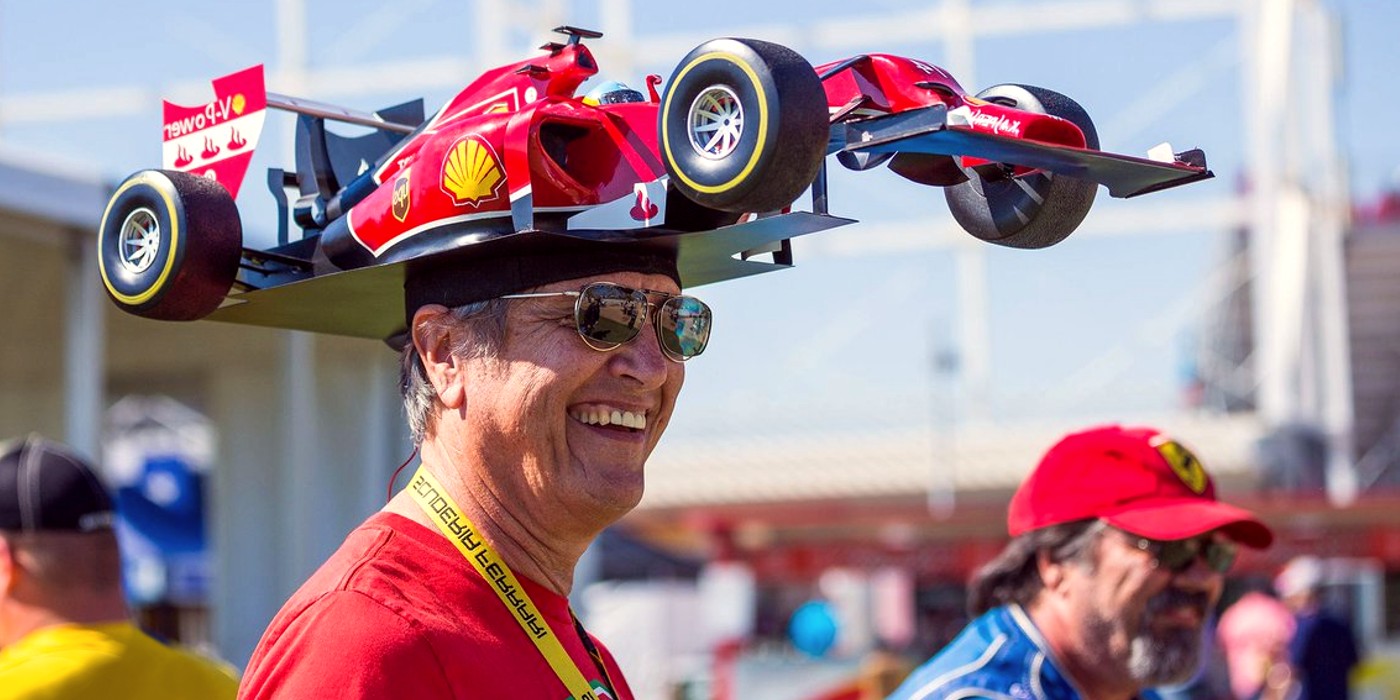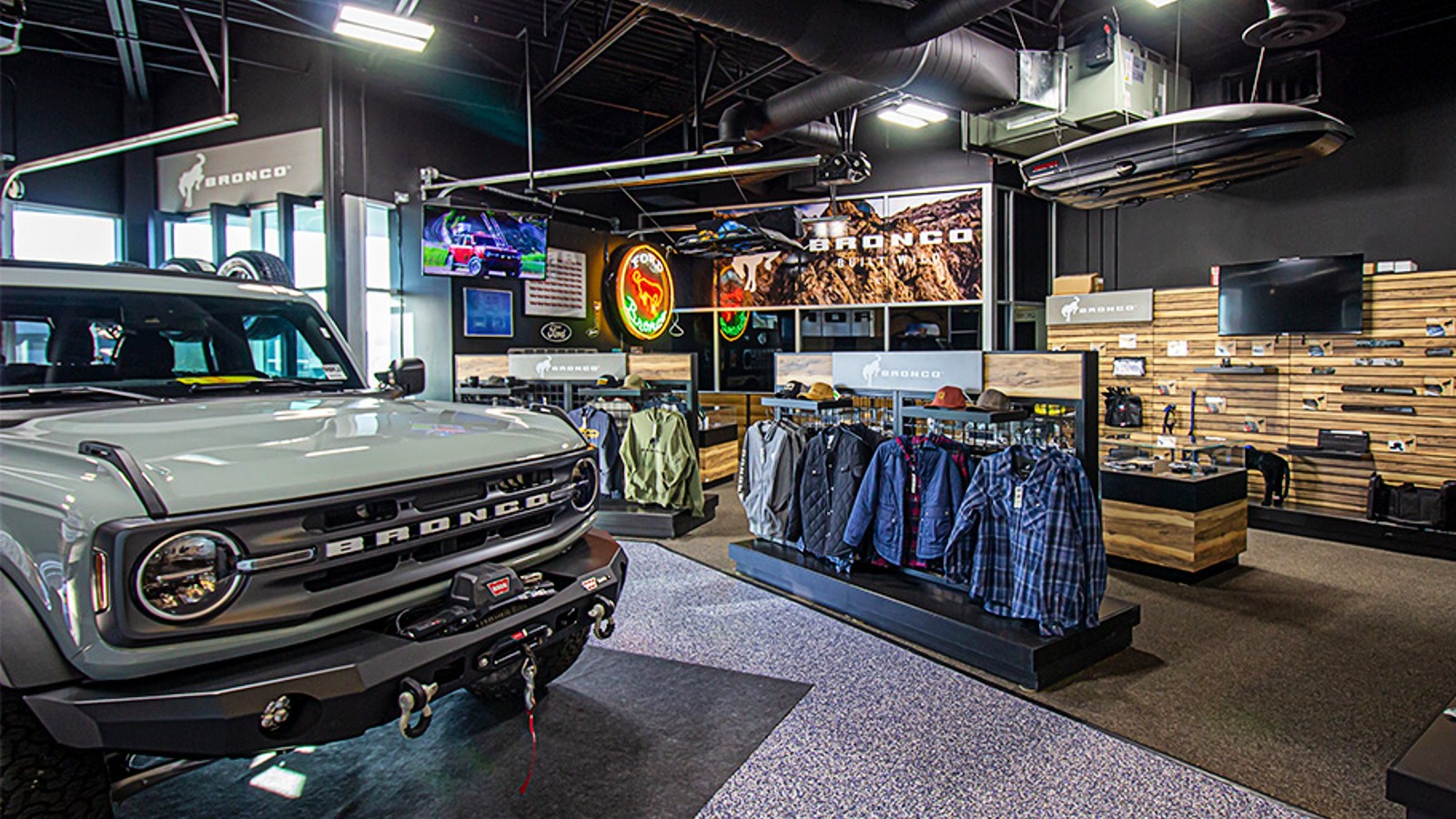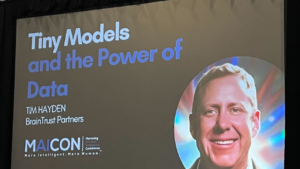All businesses struggle with employee turnover, but perhaps none so much as the car business. By some estimates, auto dealership employees turnover at an annualized rate of 46%. Forty-six percent! And that means more expense to find, hire, and train replacements – and fewer profits – for the stores, themselves.
But I don’t want to talk about turnover. Instead, I want to talk to you about fans. And not just any fans, but superfans. We’re not talking about the guys who watch every Bears game, we’re not even talking about the season-ticket holders who go to every game … we’re talking about the guys who scream their lungs out, in freezing weather, shirtless, covered in blue and orange body paint. THAT guy. He’s a superfan – and he’s not alone. There are superfans for just about every sports team, celebrity, musical artist, or brand you can think of, and each one of them is possessed with deep knowledge of and passion for their chosen interest – and, in some cases, the superfan communities can have a profound influence on the direction their icons take.
That guy shouting into the freezing cold and covered in body paint? That’s one kind of superfan – but you probably know others, from the kid who can name every Pokémon to the regular at the sports bar who seems to know the ERA for every player who steps up to the plate … but today, we’re going to focus on superfans that love a specific brand.
And not just any kind of brand. A car brand.
Every Car Brand Has Superfans

There are at least as many different breeds of automotive superfan as there are car brands, and for every NASCAR fan with a Chevrolet bowtie tattoo’ed on his arm you’ll find one or two Ford and Mopar tattoos, with a few Jeep, Porsche, Ferrari, and even Toyota and Lexus tattoos in the mix, as well. No brand is “safe,” but so, too, you’ll find that for every tattoo there’s a bookworm who can spot the difference between a 1948 Chevy Fleetmaster and a ‘49 from 100 yards, and pick out the “new for ‘48” Satin Green lacquer and the ‘47/48 Seacrest Green from even further … but perhaps no automotive superfan can match the fervor of the ultimate vehicular superfan: the Harley-Davidson superfan.
You already have a picture in your head – and it’s probably someone in a leather jacket, denim jeans, wearing wraparound sunglasses and talking about, “the wind in your hair and the feeling of freedom,” right? Someone who knows that words like “shovelhead,” and “panhead,” aren’t insults – or, aren’t just insults – and believes that “loud pipes save lives.” They say that they feel a sense of “brotherhood,” with other Harley riders, and hold themselves apart from not just the 95-plus percent of Americans who don’t ride motorcycles, but from the 65 percent of motorcycle riders who’ve never owned a Harley, as well.
Harley calls these people “core buyers,” and the company loves them. The company doesn’t just love them because they’re evangelists of the brand, either – Harley loves its core buyers because they spend. They buy Harley-licensed t-shirts, wallets embossed with the bar and shield, Harley-Davidson wall calendars, socks, shoes – you can even buy a Harley-Davidson themed first aid kit. And it’s not just them, it’s their friends and family, too – even if a Harley superfan is utterly alone in their family, and no one in their immediate circle shares their love for the brand, you can bet that they’re buying Harley-themed birthday and Christmas gifts (complete with Harley wrapping paper) for that one superfan in their life, so it’s not just the superfan that’s spending money – it’s everyone around them, too. That brand love, even if it’s not passed on directly, is financially infectious.
Harley’s dealers understand this perfectly, and they play into it. Walk into any successful Harley-Davidson dealer and it’s as much a clothing and boutique merchandise store as it is a bike shop – and those “soft lines” of t-shirts and jackets carry much higher margins than most of the bikes they sell, too.
What’s more, the people working at the stores – from the sales staff to the service advisors to the people behind the parts counter – they’re almost always decked out in Harley gear, themselves … and that’s not always mandatory. As often as not, that’s just what those guys wear, anyway.
Because they are superfans, too.
And that, dear friends, begs the question: why aren’t the people working at your Ford dealership Ford superfans? Why isn’t your Volkswagen store packed with Volkswagen superfans, VW merchandise, clothing, toys, and more?
I asked that very question on the Auto Hub Show a few days ago, in a (virtual) room full of smart people who were talking about employee retention, and why dealerships struggled so hard to find employees willing to engage sincerely and (I’m stealing this word) activate with customers. The response was as instantaneous as it was predictable: “Harley is different. That would never work with a car brand.”
Smart people. Successful people. Car people. People of different races, religions, ages, and genders suddenly united in this idea that a car brand couldn’t engage with its customers the way a motorcycle brand does – but why not?
Some Dealers Get It

I spoke with Auto Hub Show host, Ian Nethercott, after the episode. “When you go to a dealership’s website, 99% of what you see is geared towards selling you a car,” he said. “It’s all at the top of the funnel.”
He’s right.
I talked to some other people about dealer websites as well, and the message was largely the same. “When I was helping set up dealer websites, it was like pulling teeth with some of these GMs just to get a service coupon out of them,” one person told me. ”They were totally focused on getting more leads through the door. Service and parts were an afterthought for these guys, if they thought about them at all. T-shirts and things like that were ‘accessories,’ and they were never discussed.”
T-shirts were never discussed? How could you know that apparel couldn’t be a profit center for your store if you’ve never even discussed it? Why wouldn’t you want every customer leaving in a new Ford F-150 or Mustang or Bronco to do so in a Ford t-shirt?
In other words: where are the superfans? Why aren’t car dealers making an effort to attract their superfans and not just sell to them, but put them to work?
“I knew a GM at a Mitsubishi store in Canada who was a Mitsubishi superfan,” again, Ian Nethercott. “He knew all about the racing team, the history of the cars, even the old ones going back into the 1980s. He even had like a mascot, a guy with a Samurai sword, the whole thing, and all he wanted to do was sell Mitsubishis. Can you imagine?”
I can. Mitsubishi has a great history, and building the diamond-star motor cars, or “DSMs” like the Eagle Talon and Mitsubishi Eclipse, was almost a rite of passage for any Gen-X drag racer cutting their teeth in 90s. I can see it, despite the fact that the brand may not be what it once was in the US.
“What happened to him?” I asked Ian.
“The store got bought out,” he said, “and the new owners fired him.”
“They fired him!?” I asked.
“Immediately,” answered Ian. “He called me up distraught, like he didn’t know what he was gonna do if he couldn’t sell Mitsubishis.”
“What did you tell him?”
“I told him to find another brand.”
That’s what he – and, apparently, another 46% of auto industry employees did. And do. Every year. And every brand has them. “Kia saw the rise of a very passionate superfan connected to the launch and success of the Stinger, and have seen much of that same passion take hold in the EV6 and Telluride communities,” says James Bell, the head of corporate communications at Kia. “We expect the same once the EV9 launches later this year. Great vehicles sold by smart dealers is one of the many ways we set up Kia for superfan success.”
So, why don’t car dealers try harder to recruit superfans? Why shouldn’t the superfans be the most sought-after employees in the business?
“I think the dealers would love to have them,” explains Larry Feldman, the President of a national recruiting firm called Career Changers USA, and one of the top-rated automotive sales trainers in North America. “The dealers would love to have the enthusiasts, but they don’t attract them. What you sometimes see is a dealer group that hires someone at their Ford store and that guy comes to me and says, ‘Larry, I really love Jeeps. Can you get them to move me to their Jeep store?’ and they’re really successful. But no, you don’t see want-ads that say, ‘Do you love Fords? Come work with us!’”
“But isn’t that crazy?” I asked him? “Wouldn’t you want that enthusiasm and that excitement for the brand and the product in every part of your store? Wouldn’t you want the guy selling an Explorer to tell your customers, with a straight face, why they’re excited to be selling the best brand in the world?”
“Look around,” says Larry. “Tell me what isn’t crazy these days.”
Fair enough.
What do you guys think? Is the superfan a super-asset that can help build a community of loyal brand ambassadors for your dealership, improve customer retention, and grow referral business, or are they super-distractions that get in the way of the real goal of getting units out the door? Scroll on down to the comments and let us know.
ORIGINAL CONTENT FROM BRAIN+TRUST.








Wow, great article. I’m a marketing manager at a large multi-location John Deere Agriculture & Turf Dealership and have worked for Harley Davidson and Ford Motor Company as an OEM employee. So both sides, OEM the dealer side. I have asked the same question, the exact same question the past 25 years. I’d like to offer an answer, why don’t car dealers, and allow me to add in equipment dealers (btw, 46% turnover of Service Techs) into the mix, why don’t they create or attract super fans? 1) scale. Ultimately brands that super fans follow are likely to be National or Global brands, meaning capital investment and dealer support must come from the OEM down. Every budget planning session is filled with headwinds like inflation, COVID related factory shutdowns, transportation challenges, war, rising commodity prices, employment challenges so if someone comes to the table with an idea to increase merchandising this year or a 5-year plan to grow to 1 or 10 or $75 million it’s a drop in the bucket to car & truck or equipment revenue and all the things pulling on the capital investment necessary to hit the objectives on core competencies. Brand Marketing people like me never or rarely become the CEO;). At the dealership level it’s the same, worry about selling 125 cars this month to generate $4M in revenue or focus on getting our employees to dress like super fans? Most dealers want the focus on car sales and the OEM is supporting that decision. 2) Priority. People absolutely need cars and equipment and Parts Departments are usually the cost center responsible for merchandise. If you have to wait a week for your motorcycle part, you’re not happy but if you have to wait for a week for a car part it’s a major inconvenience. If it’s a combine or a tractor or a skid steer, now your messing with another guys ability to make a living. Super fan inventor can be fickle. It does require high margin because it requires deep discounts. Dollars tied up in non essential inventory can effect a fill rate on a part to keep a guy in his F150 today versus next week. 3). Again, in the Parts Department, showroom merchandise or super fan gear is completely different than Parts. Pay attention at the next HD store you go in. From 35th Street in Milwaukee down to each dealership, merchandising is separated from sales and parts, a separate cost center. It requires different talent. Parts, while a much higher margin than the machines or cars themselves, don’t even come close to merchandise markups. Nor merchandise close outs. Clothing is now changing style’s multiple times in the same seasons, it requires 24/7 focus where there just is not the investment in people, processes, showroom space, fixtures, etc. it’s an entirely different business.
So, there is no forecast someone could bring to the boardroom to sell an executive team to chase super fandom for their brand. OEMs and Dealership laugh at the amount of money merchandise sales brings in compared to their core product. If one of the brands could get past the first two, what an investment it would take and at what risk to their core product in such a globally competitive environment.
Back to Harley. How do they do it? Well, your article seemed to elude to a share in the mid-40s. Used to be 55-60 and in an industry much much larger! They’ve made some huge changes to their lineup, and they are focusing globally where people actually drive motorcycles. Is the future motorcycles or merchandise in the USA? Maybe the super fan is the plan?
Great feedback — my response would be that, in most car dealerships I’ve been in, any merch you can find (when you can even find it) is handled by the parts department. And, to you point, that’s a totally different animal. I’m not sure I agree with everything you’ve said about the forecasts, but there’s no question the foundations of your argument are solid.
I’m sorry I missed this one, Tim. What you said is spot on!
It truly looks like the business has “de-volved”. It’s becoming less and less fun and more and more as exciting as accounting.
Here’s a couple of interesting tidbits:
Does anybody remember Jeep Jamborees?
Our Jeep team were Raving Fans, we went 4 wheeling with our customers, at least 2 staff members a week. We turned Grand Cherokee buying stock brokers into overall-wearing, rubber boot Jeepers! We went to every Jeep Jamboree in our area, literally as a herd. 6 – 10 store employee vehicles and a bunch of customers driving to the event in a convoy. Then it was like summer camp for adults.
Now, here’s the kicker, we sold a ton of Jeeps to new owners! Why? Because they knew we loved our products and had a ton of fun every day! The vehicles could have been better, the OEM could have taken care of customers better, but just like Harley, the fun was over the top and our rentention rate was an honest 60%. Our parts department kept increasing accessory and wearables orders every month.
Then came the takeover of Chrysler and within a few years, KPI’s took precedence, the fun went away.
The second is huge, Toyota and Toyota dealers. Generally, Toyota’s aren’t fun, generally they aren’t exciting (Yes, there is Gazoo Racing, GR, but those are few and expensive) but their owners are rabid. Not a lot of tattoo’s outside of NASCAR, not a lot of shirts but they are raging fans.
Their customers are treated exceptionally, customer concerns are generally attended to and addressed swiftly. Their cars are bulletproof and their processes? Solid!
Without a doubt, the best OEM I have ever had the honor, yes honor to be involved with. One word; Kaizen. They live it.
Raving fans are earned off the love and commitment of the people who represent the brands and the dealerships. We should commit ourselves to those people and watch business explode! Why do you think Tesla has grown so much? Because EM is such a lovely guy? Beacuse the cars are so good? No, they built raving fans!
KPI’s are only for those who can’t do a good job and have to find a reason to excuse failure.
IMHO
Thanks for the kind words, Jeff! Missed you on the last one!
Hi Joe, missed you too. I hope we can get you on a few more times.
The one time I take a day off family break, the show was a barn burner! I still wouldn’t miss it for the world! We tend to forget what really matters.
I’m glad it created such a buzz, the business is in trouble and we need to get that understanding to the gatekeepers who are living with their heads in the sand thinking it’s everyone else, not them.
The only way I ever got this acroos to the ones who are the biggest culprits was to hit them with the 50% loss in net profit by creating this massive in/outflux.
However that only lasted until they galavanted off to … wherever.
🤷
Leave a comment